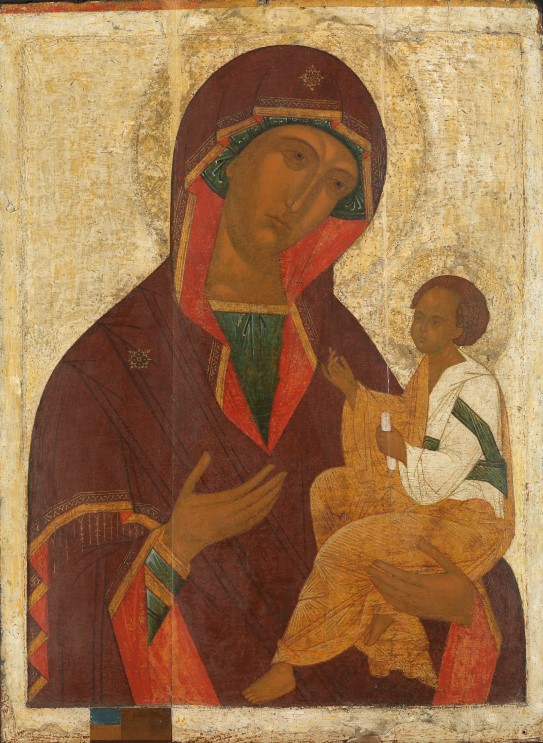Mother of God Gruzinskaya
Novgorod School
Transcription
Narrator
This icon is... a refugee.
It was made in Russia, in the city of Novgorod at the beginning of the 16th century. But 400 years later, after the Russian Revolution, it became unwanted in its native country.
In the 1920s, the communists decided to get rid of all religious images.
Religion was, after all, opium for the masses, according to communist teachings.
Part of the process of turning Russia into a communist state was to erase all traces of religious belief. Churches were closed or converted into workshops and warehouses. Priests and monks were sent to labor camps.
Many art connoisseurs were afraid that the old icons in Russian churches would be destroyed in this process. Therefore, several of them were sold abroad.
Among the collectors who bought icons was the Norwegian diplomat Richard Zeiner-Henriksen. He had lived in Russia during the revolution and was fascinated by the centuries-old artworks.
This icon, "Mother of God Gruzinskaya", was one of the icons he bought. It shows Mary with the baby Jesus on her arm.
But the icon looks different than when it hung in a church in Russia. Back then it was darker, covered in soot from candles and incense burners, overpaints and dust. The remnants of several hundred years of worship.
Before the icon was sent out of the country, this was removed by conservators pouring alcohol on the surface, lighting it on fire, and then scraping away the layers over the original image.
Zeiner-Henriksen himself describes the moment when the layers of dust and soot were removed, and he caught a glimpse of the images as they appear to us here today. He wrote:
"It was like looking through a window into a new world filled with light and color - like a glimpse into the soul of the image".